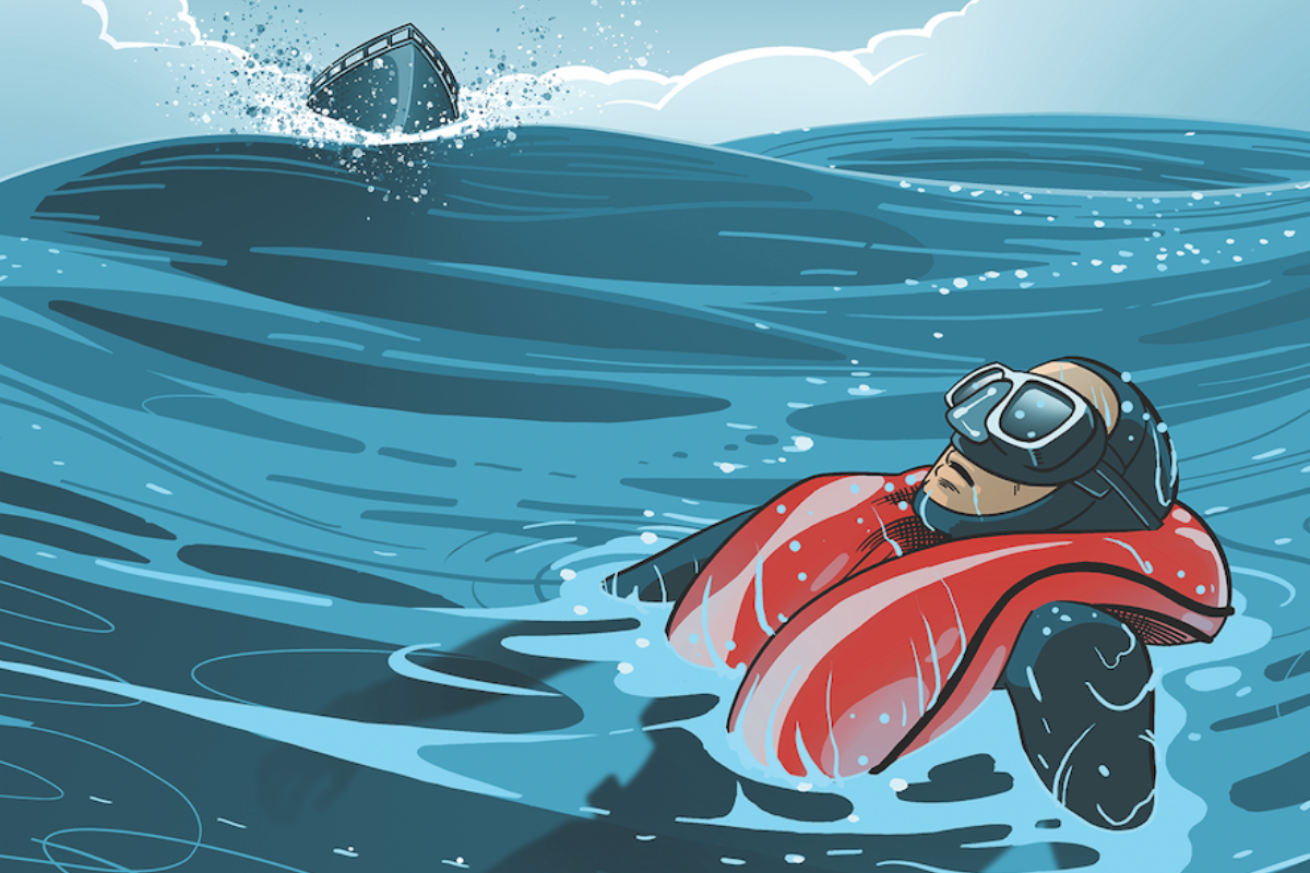Bailout | Lessons for Life

Steven P. HughesA diver experiencing shallow-water blackout.
Dave and his friends were freediving and hunting for fish on a calm day. Dave speared a large fish and felt the urge to breathe. He didn’t want to let go of the fish, but he knew he would have to get to the surface soon.
The Diver
Dave was 18 years old and an experienced freediver who loved the quiet and the lack of heavy gear that freediving provided. He had no known medical conditions.
The Dive
Dave and three buddies were diving from a private boat. They were using buddy teams and alternating their dives with two divers in the boat resting while the other two were in the water. They used a “one up, one down” approach, where only one buddy took a dive at a time, while the other kept an eye on them from the surface. Dave and his buddy both wore a freediver recovery vest for safety. They were in 70 feet of seawater.
The Accident
Dave began his dive as soon as his buddy surfaced. He was anxious to get back underwater because he saw a prize fish that would make his buddies envious. After one minute underwater, Dave was able to spear the fish, but not kill it. The fish fought back, pulling against Dave’s line. Dave struggled with the fish until his urge to breathe became too strong. He dropped his spear and began swimming toward the surface. Dave was still about 20 feet from the surface when he lost consciousness from shallow-water blackout (SWB). His limp body began to descend again, but then the freediver recovery vest he wore sensed that he was in trouble. It automatically inflated and brought him to the surface, face-up.
When Dave broke the surface about 20 yards from the boat, his buddy immediately swam to him. The other freedivers started the boat while calling for emergency medical services. The three men pulled Dave on board, where he quickly regained consciousness. The divers were met by local emergency medical services at the dock. They took him to the hospital, where he made a full recovery.
Analysis
Freediving and spearfishing allow divers to explore the waters around them in total silence—and maybe bring home dinner. But these activities require attention to safety and regular practice.
Dave was the victim of SWB, which happens when a freediver’s body uses up the oxygen stored in their tissues before they make it to the surface, causing them to lose consciousness. This is addressed in greater detail in the November 2021 issue . SWB usually occurs relatively close to the surface. It isn’t inevitable for freedivers, but it is a real possibility that buddies should be prepared for.
Dave was anxious to get underwater, and he didn’t give his buddy a chance to recover from holding his breath before starting his own dive. Had Dave not been wearing a freediver recovery vest, it would have been more difficult for his buddy to respond when he began to sink. His buddy likely hadn’t introduced enough oxygen back into his tissues to swim down and respond to the underwater emergency.
Dave’s buddy also admitted later that he was talking to the other divers on the surface and not paying close attention to Dave underwater. If he had been, he would have realized Dave was struggling with the fish and anticipated trouble by moving closer to Dave on the surface. In this case, however, Dave had invested in a freediving recovery vest. These vests have the ability to sense when a diver has exceeded their preset depth or time limits and automatically inflate to bring the diver to the surface, keeping their head out of the water and keeping the airway clear.
The best way to keep yourself and your buddies safe in the water is to take a freediving training course. You’ll learn how apnea diving affects the body, how to recognize the signs of SWB, and how to rescue a diver who is in trouble. The most prudent way to freedive is using the “one up, one down” technique. From the surface, you can watch for signs of SWB, such as a slowing ascent, releasing a breath of air from a shallow depth, or going limp and beginning to descend. SWB happens relatively quickly, usually in the last 20 feet of water. You’ll also learn to wait until your buddy has fully recovered from their dive before beginning your own. Lastly, as an extra measure of safety, the buddy who is watching will descend and escort their buddy up to the surface for the last 15 to 20 feet of the dive.
In the event you’d need to bring an unconscious diver to the surface, swim down to them, stop the descent and drop any weights they are wearing. On the surface, position the diver’s head and mouth out of the water to prevent further aspiration of water. Use rescue techniques, such as blowing air across the eyes and tapping forcefully on the cheek while saying their name. Then, immediately begin swimming with the diver to the boat or shore.
Lessons for Life
Have a safety plan: Have an emergency system in place with your freediving buddy; never assume a buddy knows how to act in an emergency. Practice safety drills well before you need them.
Understand rescue techniques: Take a course to learn how to rescue and resuscitate a diver in the water. Always dive with buddies who can assist you in an emergency.
Use safety equipment: Consider using safety devices like the freediver recovery vest to increase your chances of surviving an SWB.










